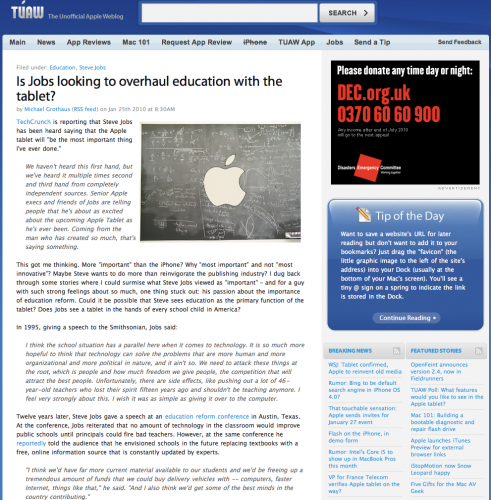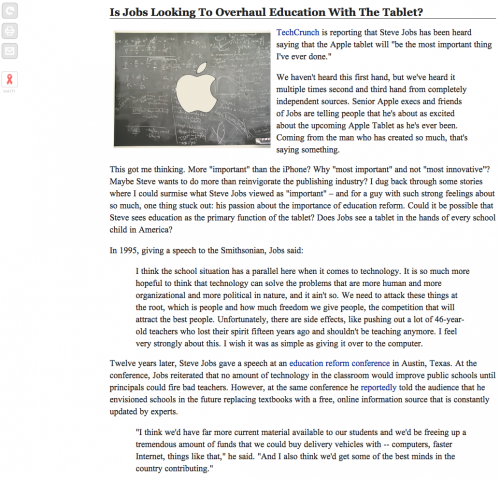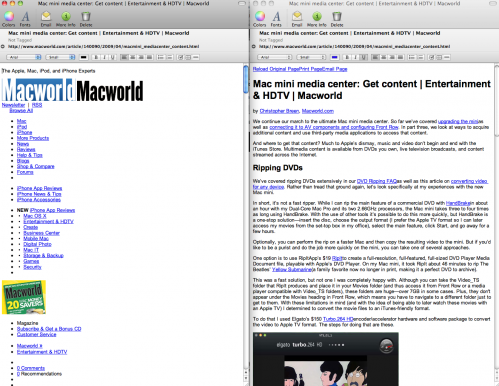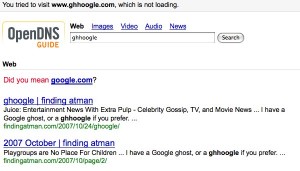DigitalOutbox Episode 69
In this episode the team discuss Net Neutrality Threat, Don’t Joke on Twitter, Facebook Messaging and Kinect.
Playback
Listen via iTunes
Listen via M4A
Listen via MP3
Shownotes
0:59 – Google Rewards and Punishes
– Gives all employees $1000 extra bonus
– Also increases all salaries from 1st Jan by 10%
– And…
– “We’ve heard from your feedback on Googlegeist and other surveys that salary is more important to you than any other component of pay (i.e., bonus and equity),” the memo reads.
– “To address that, we’re moving a portion of your bonus into your base salary, so now it’s income you can count on, every time you get your paycheck… Thank you for all that you do, and for making Google a place where magic happens.”
– But they weren’t happy that the actual memo got leaked so….
– Within hours, Google notified its staff that it had terminated the leaker, several sources told CNNMoney. A Google spokesman declined to comment on the issue, or on the memo.
– Offer engineer $3.5 million to not join Facebook
– http://techcrunch.com/2010/11/11/google-offers-staff-engineer-3-5-million-to-turn-down-facebook-offer
– We’ve confirmed today that a staff engineer at Google being heavily romanced by Facebook was offered a jaw dropping $3.5 million in restricted stock by Google (this means Google is handing over stock worth $3.5 million based on its value today, and that stock will vest over time). He quite wisely accepted Google’s counter offer. Facebook lost this one.
– Also up to 30% increase for top execs
– Stories that Google may be planning “G-Town” – A town for Google employees to live, work and play! OMG. We said that Google had the cash of a small country… now they might have the infrastructure.
5:24 – End of Net Neutrality?
– http://www.bbc.co.uk/news/uk-politics-11773574
– http://www.thinkbroadband.com/news/4475-government-rocks-the-net-neutrality-boat-by-avoiding-regulation.html
– Culture minister Ed Vaizey has backed a “two-speed” internet, letting service providers charge content makers and customers for “fast lane” access.
– It paves the way for an end to “net neutrality” – with heavy bandwidth users like Google and the BBC likely to face a bill for the pipes they use.
– Ditching net neutrality could lead to websites paying ISPs to ensure their content gets priority.
– Internet Service Providers (ISPs) are supposed to treat all web traffic equally – serving only as a one-size-fits-all pipe for whatever data is passing from content providers to end users.
– But some traffic management, where traffic from one source is favoured over another, is likely to be allowed, with a ruling due next year, Mr Vaizey suggests.
– In his speech, he argues that the continued quality of internet services in the UK is under threat due to the rapid expansion of mobile and wireless networks and the “massive investment” it needed.
– As a result, ISPs had to be free to experiment with new ways of raising revenue – provided customers were clear about what they were buying.
10:52 – Stop the Broadband Con
– http://www.virginmedia.com/information/richard-branson-broadband-honesty.php
– Why are services advertised as up to 20 or 24mb when average speed is just 6.5Mb – The average download speed received for ‘up to’ 20/24Mb DSL packages was 6.5Mb according to Ofcom’s 2010 UK broadband speeds report
– Virgin Media is already delivering the fastest broadband in the UK and it’s prepared to be open about the exact broadband speeds it delivers. It’s the first ISP in the UK to publish the typical real world speeds its customers receive each month.
– They want other ISP’s to sign up to this campaign
– Virgins typical speeds for October – http://shop.virginmedia.com/broadband/about-virgin-broadband/speed-matters.html?buspart=6469
13:47 – HM Government EMail
– Response to petition regards not disconnecting file-sharers.
“It is clear that online copyright infringement inflicts considerable damage on the UK’s creative economy including music, TV and film, games, sports and software. Industry estimates place this harm at £400m pa.
– The Digital Economy Act includes a number of measures to tackle the problem and we expect these to be successful in significantly reducing online copyright infringement. However this is an area of rapid technological change and developing consumer behaviour. The Act therefore includes a reserve power to introduce further “technical” measures if the initial measures do not succeed. These technical measures would limit or restrict an infringers’ access to the internet. They do not include disconnection.”
– Loving the subject of another email this week – from Adobe
– “Why explore new Acrobat X? It’s magic.”
16:34 – Facebook Messaging
– “This is not an email killer. This is a messaging experience that includes email as one part of it,” Zuckerberg said. It’s all about making communication simpler. “This is the way that the future should work,” he continued.
– To do that, Facebook has created three key things: Seamless messaging, conversation history, and a social inbox. Essentially, they’ve created a way to communicate no matter what format you want to use: email, chat, SMS — they’re all included. “People should share however they want to share,” engineer Andrew Bosworth said.
– All of this messaging is kept in a single social inbox. And all of your conversation history with people is kept.
– Alongside the product on Facebook.com, this is going to work on their mobile applications as well. An updated iPhone app is launching shortly. It’s important that you can keep messages going while you’re on the go, Bosworth noted.
– But you don’t need an app. It’s important to note that this can work with SMS too.
– And yes, everyone can get an @facebook.com email address if they want. But they don’t need to get one — you can use any email address. And yes, IMAP support is coming soon too (but not just yet)
– This messaging system will be rolling out pretty slowly over the period over the next few months, Zuckerberg said.
– He said that 15 engineers have worked on this product — remarkably, this is the most that have ever worked on a single Facebook project.
– http://www.readwriteweb.com/archives/facebook_integrates_microsoft_office_web_apps_into.php
– Also be able to view office attachments without leaving Facebook using MS Office Web apps
23:09 – Twitter joke trial: Paul Chambers loses appeal against conviction
– The man convicted of “menace” for threatening to blow up an airport in a Twitter joke has lost his appeal.
– Paul Chambers, a 27-year-old accountant whose online courtship with another user of the microblogging site led to the “foolish prank”, had hoped that a crown court would dismiss his conviction and £1,000 fine without a full hearing
– But Judge Jacqueline Davies instead handed down a devastating finding at Doncaster which dismissed Chambers’s appeal on every count. After reading out his comment from the site – “Crap! Robin Hood airport is closed. You’ve got a week and a bit to get your shit together otherwise I’m blowing the airport sky high!!” – she found that it contained menace and Chambers must have known that it might be taken seriously.
– He was also saddled with a legal bill three times higher than his original £384 with £600 costs, as the court ordered him to pay a further £2,000 legal bill for the latest proceedings.
– Stephen Fry offers to pay for fine
– Twitter campaign to raise funds for appeal
– I Am Spartacus
– http://www.guardian.co.uk/technology/2010/nov/12/iamspartacus-campaign-twitter-airport?CMP=twt_gu
– Twitter users angered by the conviction of a man who threatened to blow up an airport in a Twitter joke showed support for him in their thousands today, thumbing their noses at the law by republishing the words that landed him in trouble.
– Under the hashtag #IAmSpartacus – a reference to the film in which Spartacus’s fellow gladiators show their solidarity with him by each proclaiming “I am Spartacus” – thousands of people have copied Chambers’s original message.
– As a result of the show of support for him, #IAmSpartacus was the most popular worldwide subject being referred to on Twitter at the time of writing.
– Even Daily Mail think it’s absurb – http://www.dailymail.co.uk/news/article-1330049/Paul-Chambers-Twitter-bomb-joke-trial-thats-blown-justice-bits.html
– But as Paul said this morning – “Support from The Daily Mail is like kissing your sister. Essentially it’s the same, but it just doesn’t feel right.”
27:29 – Tory councillor arrested over Alibhai-Brown Stoning Tweet
– Police in Birmingham today arrested a Conservative city councillor who sent a Twitter message saying that the newspaper columnist Yasmin Alibhai-Brown should be stoned to death.
– Alibhai-Brown said last night she would report Gareth Compton, a councillor for the Erdington district, to police following the tweet
– The Conservative party said Compton had been suspended indefinitely over the alleged tweet.
– The message – now apparently deleted – said: “Can someone please stone Yasmin Alibhai-Brown to death? I shan’t tell Amnesty if you don’t. It would be a blessing, really.”
– Alibhai-Brown, who writes columns for the Independent and the London Evening Standard, said last night she regarded his comments as incitement to murder. She told the Guardian: “It’s really upsetting. My teenage daughter is really upset too. It’s really scared us.
– “You just don’t do this. I have a lot of threats on my life. It’s incitement. I’m going to the police – I want them to know that a law’s been broken.” She added that she regarded Compton’s remarks as racially motivated because he mentioned stoning.
30:13 – Twitter and Ping
– Like a track in iTunes Ping and it will auto tweet for you
– Set it up and it defaults to tweeting everything you like (can be changed)
– Click on link on Twitter and in side panel track is listed and can be previewed – click again to buy in iTunes
– Awful – nothing about social, like last.fm, and all about commerce
– Noise in my twitter stream
– Don’t cross the streams!!!
32:13 – Google TV Being Blocked
– Fox has finally made a decision, following the other major networks, Hulu and several cable channels by opting to block streaming video on its website from Google TV devices
– Blocking by Flash ID is the order of the day and takes simple browser workarounds out of play, so unless users want to go the PlayOn route, there’s large swaths of legitimate video on the web that’s now inaccessible. This same type of blocking is likely to affect other devices like the Boxee Box
– It’s the old empire logic again. Even though you can view the content online, because this is being delivered on a TV, it MUST BE STOPPED…. we’ll see more of this as the lines blur between tech.
35:06 – Beatles on iTunes
– Finally Beatles available on iTunes
– Great, just….
– In some cases double the price of cd’s that can be bought online and shipped to you by couriers – physical media!!!
– or that Apple grossly over hyped the event as contractually they probably had too
– “Tomorrow is just another day. That you’ll never forget. Check back here tomorrow for an exciting announcement from iTunes.”
– Ringo Starr added: “I’m particularly glad to no longer be asked when the Beatles are coming to iTunes.”
– They do have exclusive digital rights that extends into 2011…and they’ve made some adverts for it so they think it’s a big deal
– Steve thinks he’s the fifth Beatle
38:11 – Google Voice App Finally hits App Store
– US only and it only took a year or so
– This is Apple saying sorry for all the Beatles shit.
39:13 – Gingerbread will have NFC
– Near Field Communication will be in next Android release
– New Android phones will have a chip that let you tap your phone against special sensors to complete an action
– Payments – hook up credit card to phone
– Location – sign in
– This was a rumoured feature of next iPhone – Google look to be beating Apple
– Coming…within a few weeks
– Also, Schmidt Schmidt has finally made it clear what differentiates Google’s Android OS from the soon-to-be-released Chrome OS: keyboards.
– That’s a rather simplified expression of the bigger picture, but ultimately, Google sees Chrome OS as the operating system for traditional computers, such as PCs, netbooks and laptops, which may include touch interfaces but always include keyboards; and the company sees Android as an operating system best suited to mobile devices, which may include keyboards but almost always include touch interfaces.
– Chrome OS – next few months for release (rumoured to be November)
43:33 – Edit Google Docs on your Mobile Device
– Google now rolling out editing of docs on your iOS (version 3.0+) and Android with Froyo (version 2.2) devices over next few days
– Great for iPad users
– Works for docs and spreadsheets
44:23 – GT5 Release Date
– Finally announced – Wed November 24th
– Will have…1000 cars
– Lots of tracks and modes
– 800 “standard” cars and 200 “premium” cars (premium cars have deformation, standard, just get scratched)
46:57 – COD Black Ops Breaks Records
– $360 million revenue in…..24 HOURS
– Avatar – $232 million in its opening weekend
– UK – £58 million day one sales ($93.5 million) – 1.4 million units
– $650 million in five days – first patch now out
Picks
Chris
Kinect
– I weakened like Ian at an Apple store.
– For all the jibing it has solicited, I love it.
– Of course early days. Honeymoon period, but this turns an xbox into something else. I know it’s not for all, but it’s like getting a new console. The games even come in a purple box rather than green.
– Played multiplayer yesterday, and it’s all good.
– Technology is impressive. It works. It does track behind, but this doesn’t really affect as the games don’t require pixel perfect precision.
– It does indeed need a lot of room. For 2 player, the start of the play area is about 6ft and the back of the play area is about 12ft. Need 6ft sideways as well.
– It costs. Sure. But it will come down in price. I also have confidence that it will have its killer game next year some point.
– Already 1m units sold. I am not alone.
Ian
Boxcar for iPhone
– Notification app for iOS
– Instant push notifications for your social networks, email accounts, RSS feeds and more.
– Receive super fast notifications when someone comments, updates or messages you.
– Buzz, Twitter, Facebook, RSS, Growl
– Track when someone else tweets





